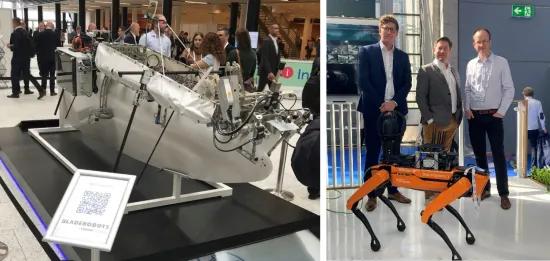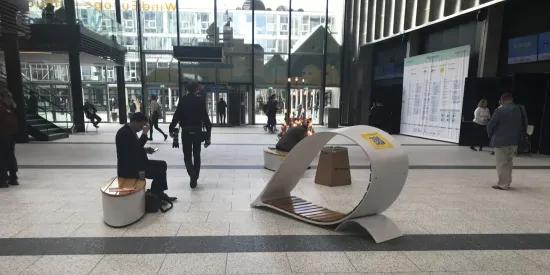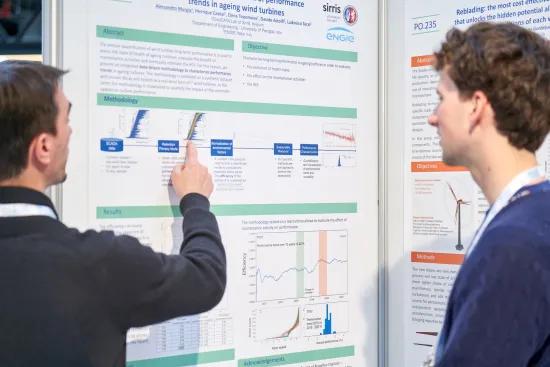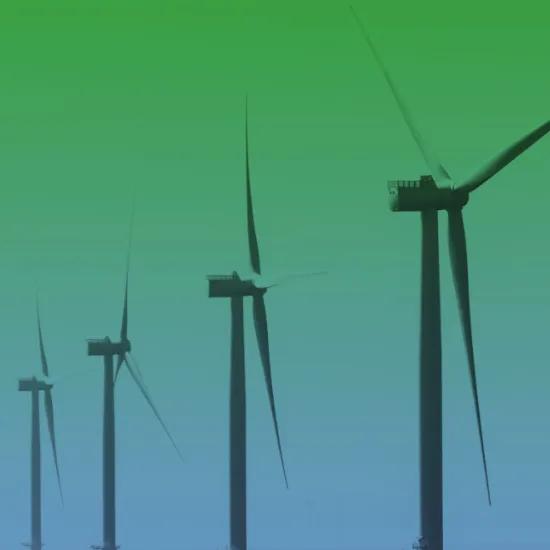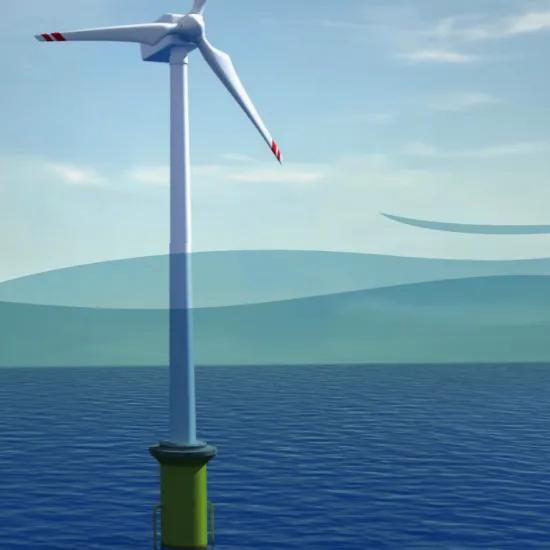WindEurope, the largest event by and for the European wind industry, presented us with the latest trends and state of the art to be found in this booming sector. Sirris was a part of it, as a visitor and as an expert. A short review.
With over 60 sessions and more than 330 speakers across three days (25-27 April), the 2023 edition of WindEurope's annual event, which took place in Copenhagen, covered a lot of ground. The conference featured discussions on every aspect of wind energy and over 500 companies and brands took their places across the venue.
You can find all key figures and facts of the event here.
General impressions
This year's event was organised differently from past editions: wind turbine/blade OEMs and other technologies were separated, companies from the same countries collected around country pavilions for as much as possible.
Not many component suppliers or companies active in blade recycling and end-of-life were to be spotted, while lots of shipping and logistics related companies were present with a booth. Blade inspection and repair services also had their fair share, next to consultancy and engineering firms.
Trends
Robots are everywhere! When you entered the building of the fair, you were welcomed by a blade repair robot by Bladerobots, a Vestas company. There were at least three other blade repair robots present. All of these robots were able to provide the full sequence of repairs: cleaning, surface preparation with high precision, application of the paint/coating, finish. One of the robots could be transported by a large drone. Another example was presented by our Belgian TSO Elia. This company presented a Boston Dynamics robot capable of doing offshore inspections at substations or at the first offshore energy island.
Left: blade repair robot by Bladerobots, right: Boston Dynamics robot for offshore inspections by Elia (Source: WindEurope)
Bird & bat monitoring and repellents. At least four different companies were offering four different monitoring and repellent solutions against aerial animals. This includes species recognition from images, reflecting light and/or sound to repel the animals, depending on the species and their behaviour.
Green transition: everything is 'going green'. Recycling, reuse, low carbon emissions and sustainability is in everything, in all offerings. European net-zero targets, to be reached by 2050, are being adopted in full speed: not only in tender preparations, but also in all products and solutions offered. A nice showcase were the seats in the hallway of the conference, which were actually repurposed old wind turbine blades. New no-price tender criteria for the offshore wind farms have been highlighted and discussed during the conference, especially on the last day.
Repurposed old wind turbine blades used as seats (Source: WindEurope)
Smart tech could also be found everywhere during the exhibition and conference, going from smart sensors and performance monitoring to AI, etc.
Company and development highlights
Stiesdal presented a industrialised floating offshore foundation and power-to-X, green fuel production and possible CO2 storage solutions to integrate with its offshore business. The company seemed to be ahead of the crowd regarding integrated approaches and offshore H2 production.
Elia’s booth with its scaled mock-up of the Princess Elisabeth Island in the North Sea was a real eye-catcher when you entered the hall, and a great set-up promoting Belgian’s upcoming offshore approach.
Elia's mock-up of the Belgian Energy Island (Source: WindEurope)
Green Hydrogen Systems has a new electrolyser working on pressurised alkaline membranes. According to the company it would be able to follow the quickly changing power production of wind turbines. And this is normally not the case for atmospheric alkaline electrolysers. Its new and larger series (4.5 MW) is for sale from mid 2024.
N9ve has developed a procedure to remove magnetic materials from wind turbines (also EVs) and to turn them into ‘raw’ material. In this way the raw material does not have to be imported from China.
First Airborne has come up a very unique concept to measure the wind in front of wind turbines, by dropping a sensor with a drone.
Conference
The conference held a good balance between state of the art and beyond. Next to technical and theoretical sessions, there was room for debate discussions, brainstorming within smaller groups and opportunities to view posters. The fact that conference presenters also made posters of their work, allowed participants who could not attend the conference to learn about the work as well.
WindEurope Conference Sessions (Source: WindEurope)
On 25 April Alessandro Murgia from the EluciDATA Lab by Sirris held the presentation 'Data-driven characterization of performance trends in ageing wind turbines', which was also turned into a poster, presented at the event. In the scope of the many aging wind turbines located all over Europe, understanding performance decay is and will become even more important in the future. In this work an innovative method was presented to monitor the long-term wind turbine performance trends through the analysis of SCADA data. We presented a methodology to characterize turbine performance in the long- and short-term. The methodology can factor out confounding effects that can affect turbine performance, such as weather and operative mode.
Ozlem Ceyhan Yilmaz from OWI-Lab / Sirris co-authored a publication with the title “Economic Impact Assessment of Hydrogen generated from Offshore Wind: A Case Study for Belgium”, which was presented at the conference on 26 April. Results are obtained from a cost model to estimate the 'Levelized Cost of Energy' (LCOE) for the wind farm and the 'Levelized Cost of Hydrogen' (LCOH) for the hydrogen plant, which has been developed in collaboration with DTU Wind Energy Department in Denmark. The study compares LCOH values based on the electricity source and highlights the importance of electrolysers in driving costs. Results show that using electricity from a dedicated wind farm is more profitable for large-scale hydrogen production. The approach provides insights for comparing H2 generation strategies and reducing costs. It contributes to understanding the economic impact of such projects and encourages accelerated investments in hydrogen production.
The paper was accepted to be published in the IOP Journal of the conference proceedings.
During his presentation 'Effect of OWF curtailment scenarios on WTG support structure loads and lifetime' Koen Robbelein, researcher at the VUB of OWI-Lab, showcased insights from a research activity at VUB investigating the effect of curtailment on structural lifetime of offshore wind farms (OWFs). The increasing occurrence of curtailment instructions for OWFs has raised concerns about the support structures of wind turbine generators (WTGs), as they were not originally designed to account for this operational condition. Curtailment requires WTGs to stop and start, resulting in additional load cycles that support structures must endure. The research team performed a lifetime impact assessment based on real-world load monitoring data to assess the potential impact on structural lifetime and mitigation of the impact by defining a long-term curtailment strategy. The research highlighted the significant impact of flexible curtailment regimes on structural lifetime, suggesting the avoidance of a single curtailment regime with high flexibility. By exploring data-driven long-term curtailment strategies with varying regimes over specific periods, the study demonstrated that such strategies could mitigate the detrimental effects on structural lifetime, while still allowing curtailment to happen. The research aimed to emphasize the importance of considering the structural implications of curtailment and promote well-considered long-term curtailment strategies. Future investigations will also explore the consequences of longer standstill periods resulting from curtailment.
Presentation by Koen Robbelein, researcher at VUB


